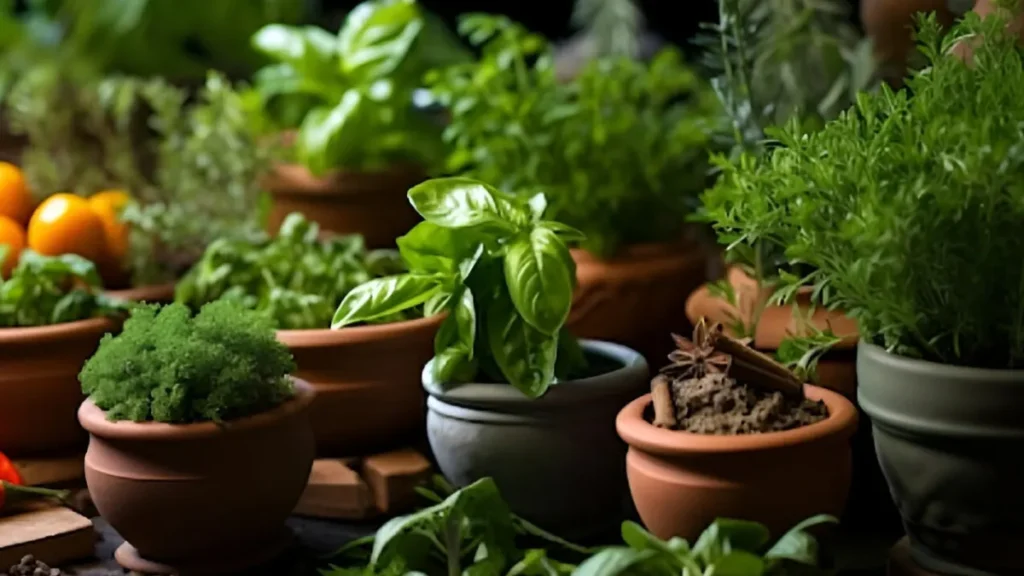In recent years, there has been an increase in interest in growing vegetables indoors in pots. This creative gardening method has several advantages, from year-round fresh produce production to making the most of small spaces in urban settings. Vegetable gardening inside may be a gratifying and entertaining hobby, regardless of your level of gardening experience.
Useful advice for growing vegetables indoors in pots:
- Select veggies that don’t take up a lot of room and are good for growing inside.
- To avoid flooding, use pots or containers with drainage holes.
- Select a potting mix that is high in organic matter and well-draining.
- Plant your pots where they will get lots of sunlight, or use grow lights to add extra illumination.
- Refrain from submerging or overextending. Ascertain that the soil is damp but not soggy.
- For your plants to receive the vital nutrients they require, use a balanced fertilizer.
- Maintain an indoor climate that is appropriate for the veggies you are cultivating.
- Regularly check your plants for any indications of illness or pests, and take the necessary measures.
- As they grow, some veggies might need to be pruned and given support.
- When the vegetables are mature, harvest them to promote continual production.
Growing vegetables indoors: 15 surprising vegetables:
- Scallions: Similar to green onions, scallions are easily regrown from leftovers, making them a useful addition to indoor gardens.
- Eggplant: Dwarf types of eggplant grow well in indoor pots, yielding fresh fruits for your preferred recipes.
- Cucumbers: Tight bush cucumber types can be grown indoors in small spaces with trellis support, producing fresh cucumbers.
- Herbs (parsley, mint, basil, etc.): A lot of herbs grow well indoors and add vibrant tastes to your food preparations.
- Peas: Dwarf pea types, like dwarf beans, grow well in indoor pots and produce soft, delicious peas.
- Beans: With the right support, dwarf bean types can be cultivated indoors and produce fresh pods for your meals.
- Carrots: For container gardening, go for shorter carrot varieties, and savor the fresh produce straight from your indoor garden.
- Green Onions: An easy choice for indoor gardening, green onions can be grown again by submerging their roots in soil or water.
- Lettuce: You can always pick leafy lettuce varieties for salads and they work great in indoor containers.
- Bell Peppers: To enjoy homegrown peppers all year round, choose dwarf kinds of bell peppers for indoor gardening.
- Radishes: Ideal for indoor containers, radishes grow quickly and are compact.
- Cherry Tomatoes: You may grow small-sized cherry tomatoes indoors in pots to have fresh fruit all year round.
- Microgreens: These immature, highly nutritious greens can be harvested in a matter of weeks and are very easy to grow indoors.
- Potato: To grow fresh, homegrown potatoes all year round, use big soil-filled containers or bags, put them in a well-lit spot, and be sure to water them regularly.
- Beet: You can grow vegetables indoors, like beets, as long as you have adequate light, the correct soil, and consistent watering.
Conclusion:
In conclusion, there are many benefits to growing vegetables indoors, such as having access to fresh produce all year round, having control over environmental elements like humidity and temperature, and being able to cultivate a wide range of crops regardless of the weather outside. However, good development demands careful attention to lighting, irrigation, and soil quality. Indoor vegetable gardening may be a fulfilling and sustainable method to add organic, nutrient-dense produce to your diet with the right preparation and upkeep.
Certainly! If you’d like to learn more, please consider following our WhatsApp Channel: Harvest Gardening
A frequently asked questions:
Q1: How much light do you need to growing vegetables indoors?
A1: For best growth, indoor vegetable plants usually need 6–8 hours of direct sunlight or 12–16 hours of artificial light per day.
Q2: What type of containers are suitable for growing vegetables indoors?
A2: Containers for growing vegetables indoors should include drainage holes at the bottom to prevent waterlogging. As long as they offer sufficient drainage, options include fabric grow bags, plastic or ceramic pots, and even reused buckets or crates.
Q3: What is the ideal temperature range for growing vegetables indoors?
A3: The ideal temperature range for most veggies is 60–75°F (15–24°C). Keep plants away from drafty windows and other heat sources that could alter the temperature.

